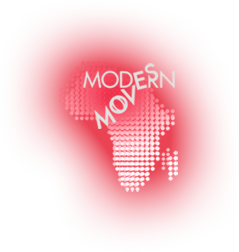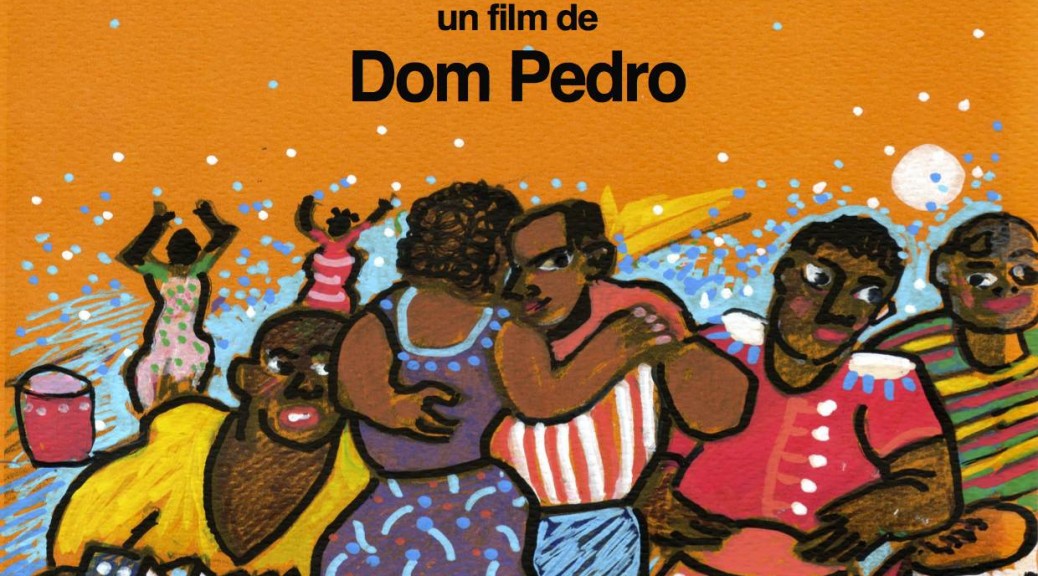Moving Conversation #7, held on November 18th, 2016, was red hot. For this edition Modern Moves put two iconic pioneers from the global voguing and ballroom scene — Stephane Mizrahi and DJ and producer Vjuan Allure — in conversation with Melissa Blanco Borelli, Senior Lecturer in dance studies at Royal Holloway University. As a dance form, culture and movement language, voguing is more popular now than ever. With artists from Yelle to FKA Twigs incorporating (or appropriating) voguing into their aesthetic, not to mention the release of new documentaries on voguing and ballroom culture such as Kiki, voguing has reached a cultural apex. For this conversation, which was centered on queerness, sexuality, and a strenuous critique of heteronormativity, we heard from the pioneers of the field.
It all started off with a teaser dance by Mother Steffie, known for a style of vogue called Old Way which centers on clean lines, geometry and posing-as-dance. Steffie, who wore a captivating red catsuit with opulent fringe dangling in all the right places, his face covered with a matching red feather fan, worked every corner of the room — the floor, the space aisle between the seats, the back, the front as well as the balcony.
At the end of the performance, Melissa Blanco Borelli asked the panelists to describe what voguing is, particularly for people in the audience who may be unfamiliar with the culture. “I was there at 11 1/2 years old in the club when I learned about voguing,” Vjuan Allure said, locating the origins of voguing to the drag balls in Harlem of the 30s and 40s. “Voguing is a dance to express yourself but it’s also a battle dance. It is actually a fight between people in the club that don’t like each other. That’s what it’s supposed to be but it’s more amicable now.” This particular kind of fight, to be clear, is more of a creative fight, not one with blood and actual punches. It is a battle of aesthetics, an attempt to see who can throw the hardest punch with the best outfit and who can outdo the competition with better moves or another type of surprise performative element. The battle sentiment of voguing is a way of having creative tricks up your sleeves that will make you and your performance come out on top.
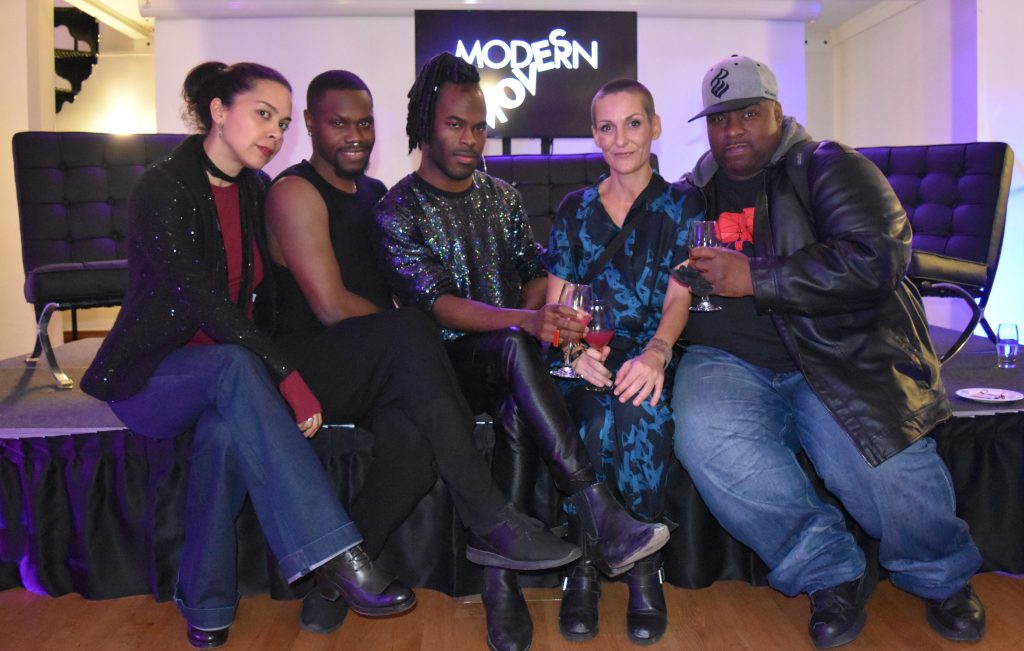
“It’s self-expression,” Allure says. “It’s also fabulous drama. It’s moving [in the way] of model poses. Stretch, acrobatics, and definitely a lot of attitude. You cannot vogue without attitude. It’s you coming out of your shell and being presenting it on the floor.”
When Mother Steffie finally caught his breath, he joined in the conversation.
“Voguing is a dance style that takes its roots from poses, lines. You can use also Egyptian influences when you do your poses. It’s about being elegant, present. Now in ballroom culture you have different styles of voguing, which is Old Way, New Way, Vogue Femme, and in Vogue Femme you have two different styles: soft and cunt and dramatics.”
We weren’t going to let him talk about the styles without demonstrating them to us, of course.
Old way, as the audience initially saw in the teaser dance, privileges strong lines, cat walking and posing. “Each time you go a new direction, you pop,” Steffie told us. New way, on the other hand, is really all about the stretch — stretching muscles and awkward, bone bending poses. Vogue Femme, a form created by trans women of color, includes the catwalk, hands performance, duckwalk, spins, dips and is all about attitude, femininity and being “pussy,” a ballroom term used to indicate heightened femininity and which also points to the de/construction of gender. That point was made clear when Steffie added a crucial element to Vogue Femme performance. “When you vogue femme you have to bounce.”
Old way is straight and linear, whereas with vogue femme you push your hips out to give off heightened femininity. “Transsexuals used to dance vogue,” Steffie said, “and they took the style and owned it, made it appropriate for them. They didn’t want to be masculine. They wanted to be feminine.”
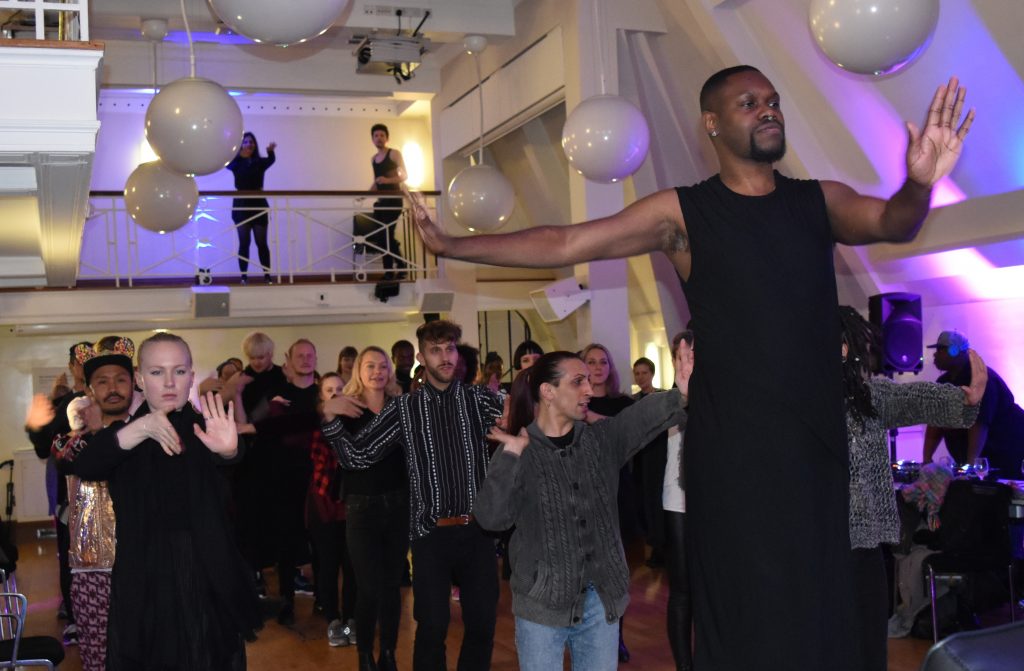
“And the reason there’s a category called vogue femme,” Allure jumped in, “is when you’re a gay club you have what we call “butch queens,” which are guys, which would be us. Then you have people that are drags, which are guys who get into drag. But you also have transsexuals and when they were in the club, they wanted to vogue, too, but they made it very feminine. That became their style.”
“There used to be a category in ballroom called “butch queen voguing like a femme queen,” so a guy imitating how a transsexual vogues. That’s what became vogue femme.”
With all of these various communities coming together — drag queens, gay men, and transsexuals, all of them interested in vogue — Melissa Blanco Borelli wondered what factors were in play that allowed these parties to innovate, to seize voguing in a way and make it their own.
“There was an ostricization regarding certain styles,” Allure said, “because old way was the classic style. When things started getting more acrobatic, people started to bend their bodies differently, including splits and clicks and doing more hieroglyphics that were more than just straight lines.”
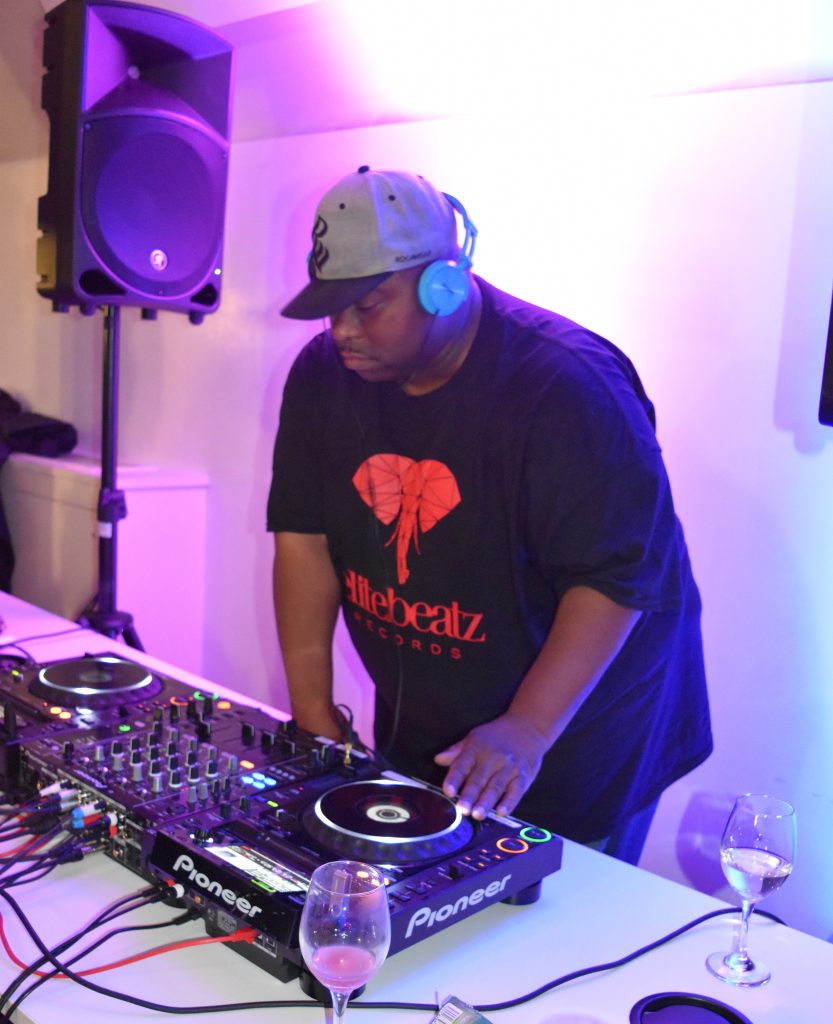
But because not everyone could dance that way, Old Way became its own style. Like all forms of dancing, voguing requires precision, attitude and conviction in order to deliver a compelling performance.
After talking through the various elements of vogue, a perfect tool kit for the free voguing workshop Mother Steffie led after the panel, the conversation shifted towards a discussion about beats, or the importance of the DJ in pulling out a successful, emotive performance from the dance floor.
“We didn’t have our own music. What we used at balls was music that was older or anything that was out at the time. I started to make beats and I kept making them. I made hundreds of them, almost thousands of them, and now we have a whole arsenal of beats. We have other beat makers that make these hyper beats. The hyper beats are there to garner this energy.” To achieve that level of energy, balls are constructed of various layers of sound: the call and response feedback from the crowd, who shout house names at the competitors, the commentator, a master of ceremonies who spurs the performers on while also narrating what they are doing and keeping the show moving, and finally the DJ, who knows how to play the right kind of beat that will pull out the right kind of performance from the dancer.
We all have some kind of relationship to beats, a point Melissa Blanco Borelli knew all too well when she asked Mother Steffie to talk about his favorite ballroom beat.
“The ‘ha’. I like ‘the ha,'” he said. “I like Vjuan’s stuff. I like MikeQ’s beats, too. Also in Paris there’s some producers that want to venture into [beat making] and the first thing I told them is, ‘If you want to make some voguing beats, you’ve got to learn how to vogue! How else are you going to get the inspiration to get the girls going if you don’t know what’s about and how you feel it?”

“The beats give you the energy,” he continued, pointing ultimately to voguing as about endurance, especially in the battling stage. You advance to the next round of competition in a category if and only if the judging panel unanimously agrees that you brought the category with your performance. A single “chop,” or disqualification, from any judge kicks you out of the competition and from advancing to further rounds. You need “10s across the board,” as it is said. Let’s say a category starts with 10 contestant. The entire goal is to find a single winner of that category, meaning that people are “chopped” until there’s a winner, and the winner from a previous round, usually seen as the best, keeps competing until they win or get beat by someone else.
With this in mind, beats have a special meaning in ballroom. “When you have to do one battle and then you go through. Then the second battle, you’re going through again. Then the third battle you’re going through. You’re already out of breath and then there’s this saying, ‘No Breather’ so you gotta go through the next battle again. You need hard beats that are going to give you energy to keep going again, surpass yourself.”
In as much as voguing is about self-expression, community and self-acceptance, Melissa Blanco Borelli noted, what are the ways that voguing as a uniquely queer of color political-aesthetic cultural form become a tool for capital. What does something like RuPaul’s Drag Race, for instance, do to the history of voguing?
“It’s great to have someone like RuPaul in commodity culture,” Blanco Borelli noted, “and showing these different creative expressions of the queer self. But then it’s also what happens to the history and to the innovators and people like Vjuan Allure, who were around from day one. What happens when it’s commodified?”
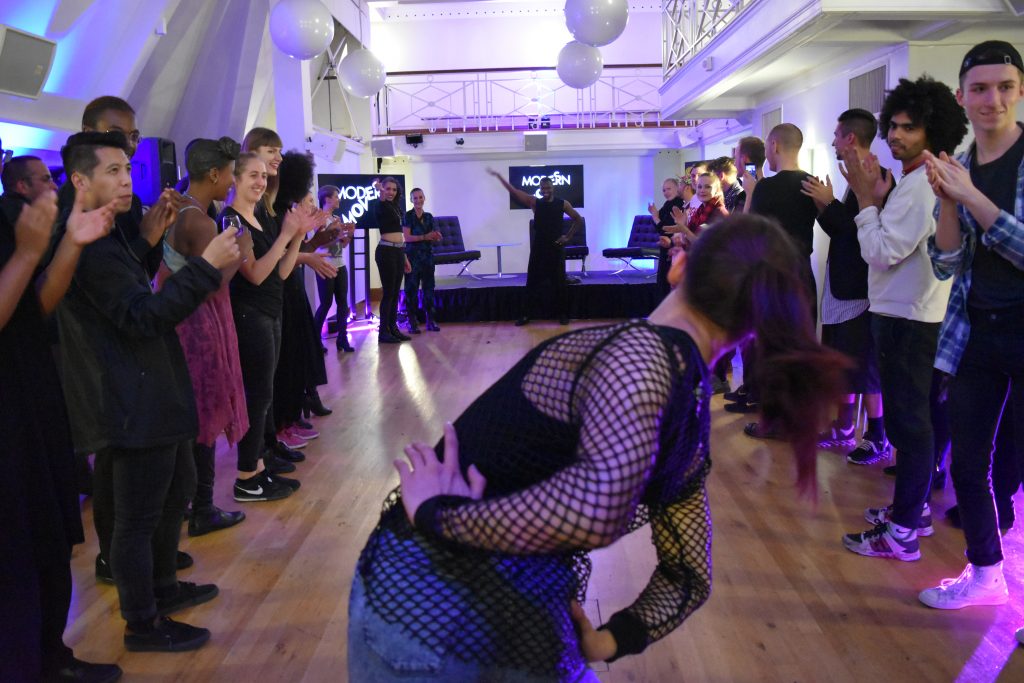
Vjuan Allure spoke about the way he always grills newcomers to the ballroom scene whenever they want to write a paper about voguing or do anything related to ballroom at all.
“Why? You have nothing to do with this culture. You’ve never been to a ball. How are you going to write about it? What are you going to say about it? The community has been taken advantage of before, so they kind of very on their Ps and Qs when someone comes in. RuPaul walked a ball in drag in his earlier career, but he did not compete. But on his show he does have people that are in the ballroom scene that are actually drag queens that are part of the houses.”
“He wanted to do an album as a tribute to the ballroom scene, and that was the album called Butch Queen, and that was the one I worked on. Purposefully I did not give him ballroom beats. I gave him beats that were different, that were things he didn’t have. A lot of people believe that RuPaul has nothing to do with the ballroom scene when actually he does. As long as we continue to monitor what people are doing with the ballroom scene we keep appropriation out of the works. Or at least try to.”

The spirited question and answer session included questions about whether or not it’s cheating if women are involved in ballroom; safe spaces; the presence of voguing on YouTube and the internet; about the problematics of racial dynamics and competing with fellow people of color; and personal confessions about how voguing has shaped their own lives.
The depth of this seventh conversation was in the power of thinking through popular culture and dance while simultaneously thinking seriously, and in an intersectional way, about race, gender, sexuality and dance. We learned that it’s hard to talk about dance, really any kind at all, without also taking into account how that dance is impacted by sexuality and or queerness, gender and racial dynamics.
We closed the Conversation with a free voguing workshop led by Mother Steffie and an after party with beats by Vjuan Allure, a party where everyone got to be a diva for the night. And isn’t that what it’s all about?
MADISON MOORE

